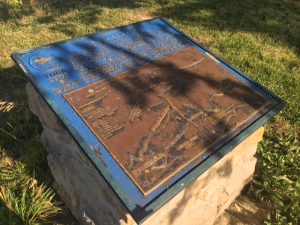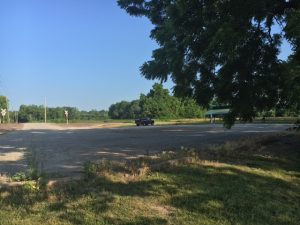Price’s Great Missouri Raid

In the late afternoon of Oct. 19, 1864, in Lexington, Mo., with only 2,000 men and eight cannons Maj. Gen. James Blunt realized that he could no longer stop Maj. Gen. Sterling Price’s 10,000 man Army of Missouri and ordered a withdrawal west towards Independence, Mo.
Marching west until 2:00 a.m. on Oct. 20, Blunt ordered his forces to halt at the Little Blue River crossing of the Independence-Lexington Road. The men fell out of column exhausted knowing that the Confederates could not be far behind. At daylight, Blunt was active surveying his position as a place to make a fight. Looking at the covered bridge over the river, the high river banks and the low rocky ridge to the west, he immediately sent word to Maj. Gen. Samuel Curtis in Independence that he would secure this position and to send ammunition at once.
Gen. Curtis response was short and to the point. The Kansas Militia would not cross the Big Blue, Blunt was to leave Col. Thomas Moonlight with 400 men and two cannons to hold the crossing and fall back with the rest of the troops to Independence. Moonlight spent Oct. 20 strengthening his position by setting up headquarters on the Independence-Lexington road near the wooden bridge. He placed Maj. Martin Anderson, U. S. A., with men at the bridge to hold it as long as possible, but not to fall back until he burned the bridge. He then sent Capt. James E. Greer, U. S. A., with men north to the ford at the Blue Mills crossing and Capt. Joel Huntoon with men to a ford 4 miles distant to the south.
“You will scrupulously avoid all wanton acts of destruction and devastation. Restrain your men, impress upon them that their aim should be to secure success in a just and holy cause and not to gratify personal feeling and revenge. Rally the loyal men of Missouri, and remember that our great want is men, and that your object should be, if you can maintain yourself in that country, to bring as large an accession as possible to our force.”
Gen. Kirby Smith’s orders to Maj. Gen. Sterling Price, Aug. 4, 1864
“Make St. Louis the objective point of your movement, which, if rapidly made, will put you in possession of that place, its supplies, and military stores, and which will do more toward rallying Missouri to your standard than the possession of any other point. Should you be compelled to withdraw from the State, make your retreat through Kansas and the Indian Territory, sweeping that country of its mules, horses, cattle, and military supplies of all kinds.”
During this time Blunt did one thing that would prove crucial, he sent a telegraph operator to Moonlight.
No longer completely isolated, Moonlight gained confidence in his position and troops.
On Thursday, Oct. 20, the Confederates advanced to Fire Prairie Creek and camped for the night. On Friday, Oct. 21, the Confederates awoke at 3 a.m. and marched along the Independence-Lexington road to the bluffs on the east side of the Little Blue, arriving at 6 a.m. At 8 a.m. the battle began when Confederate skirmishers advanced on the Union skirmishers east of the Little Blue. Capt. H. E. Palmer, U. S. A., of the 11th Kansas, was doing a little domestic repair on the pants he ripped during the fight at Lexington. Seeing the rapid advance of the Confederates, he threw his pants over his saddle and went to battle in his drawers. The Union men showed some resistance and then fell back across the bridge, setting it on fire.

The Confederates advanced rapidly and were able to put out the fire and began their attack on the Federal position. The Kansan’s stopped the first two attacks from Maj. Gen. John S. Marmaduke. Maj. Gen. James A. Fagan, C. S. A., shifted left to join Marmaduke for another charge. By 9 a.m., Brig. Gen. Joseph O. Shelby was finding the resistance in his front to be too much and so he crossed behind the Rebel position going from the left to the right and charged up the Lexington-Independence road to get behind Moonlight’s men. This movement began the dislodgment of Moonlight. After 2 hours of fighting at the bridge, the Union forces began their movement toward Independence. Twice during this period, Moonlight sent telegraph messages back to Blunt requesting reinforcements. Rock wall to rock wall, ravine to ravine, the fight raged across the plains to the west.
The Battle of the Little Blue River Park is owned and operated by Jackson County Parks + Rec and it is located at 21594 E Old Lexington Rd, Independence, MO. The site has two historic markers pertaining to the battle, a shelter house and access to the Little Blue Trace Trail.